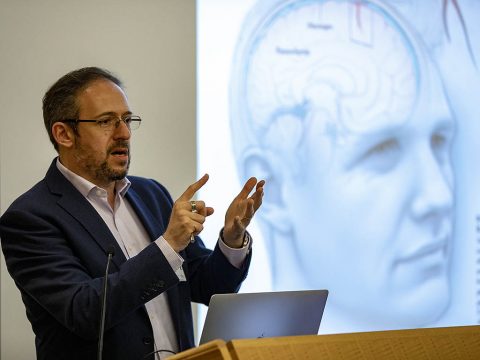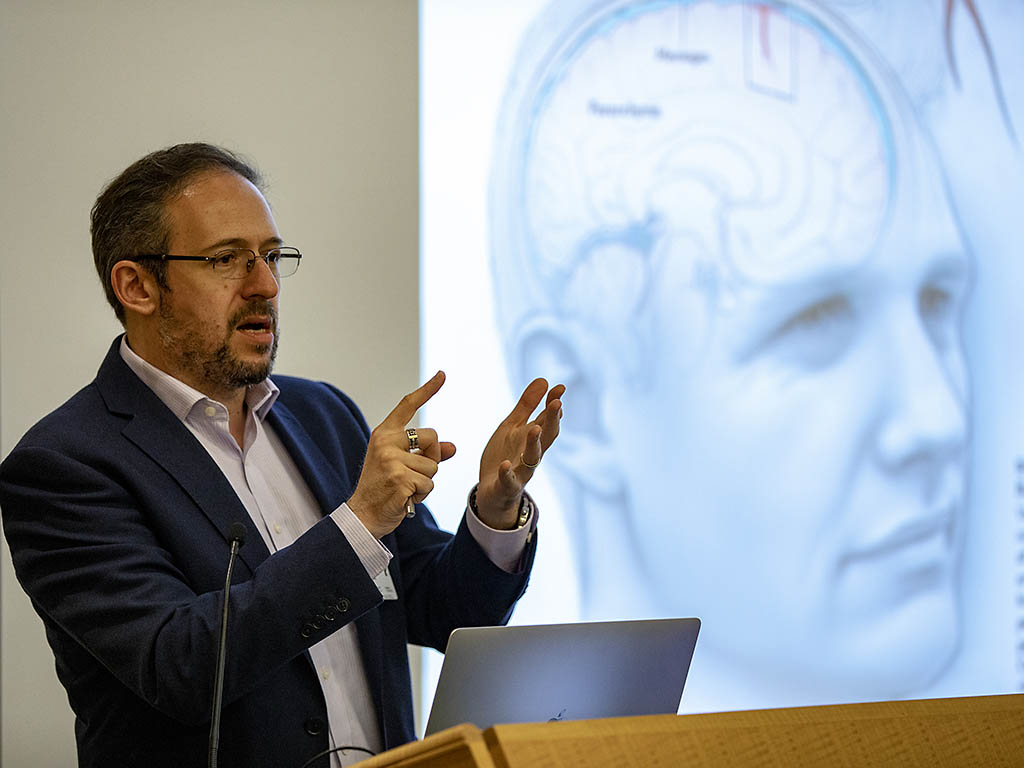 Hampton, VA – The team at the Center for Brain Immunology and Glia (BIG) at the University of Virginia looks a lot like the multinational collaboration onboard the International Space Station, with researchers from 16 different countries combining their talents to do biomedical research.
Hampton, VA – The team at the Center for Brain Immunology and Glia (BIG) at the University of Virginia looks a lot like the multinational collaboration onboard the International Space Station, with researchers from 16 different countries combining their talents to do biomedical research.
Led by Dr. Jonathan Kipnis, the BIG team’s research is big indeed, as they work together to find treatments for major neurological diseases such as multiple sclerosis, Parkinson’s, Alzheimer’s, stroke, and dementia.

These diseases impact an estimated 20 million Americans and cost the U.S. nearly $800 billion per year, according to Science Daily. The costs are compounded when factoring in the global scale of these diseases.
Kipnis recently spoke to the workforce at NASA’s Langley Research Center in Hampton, Virginia, about the history and innovations in the field of brain immunology, and what that may mean for the millions who suffer from these diseases or potentially face them in the future.
Early research in the field of brain immunology dates back to the 1700s with a labeled wax model of a supposed lymphatic system in the brain; however, it was largely discredited for centuries. Fighting for acceptance of a neuro-immune connection in the early 2000s was still difficult for Kipnis, as he tried to convince new medical students of the possible importance of the meningeal space. This is the area beneath the skull that surrounds the brain with cerebral-spinal fluid. The students were throwing out the very parts he felt important to research.
Immune cells are found in the meningeal space but were never fully investigated as they were not able to cross the blood-brain barrier. Thanks to some new tools in neuroscience built by engineers, Kipnis and his team were able to label and view the interactions of up to 900 neurons, versus the previous record of twelve neurons studied.
These studies are showing some type of communication between neurons and immune cells, with release of molecules that can pass through the blood-brain barrier. Neurons are responding and acting on these signals from immune cells proving they do interact after all.
Kipnis’ theory is that in an immune-suppressed animal, the neural pathways can get clogged, letting toxins build up in the brain. This can lead to impaired memory retrieval or “brain fog” —such as in Alzheimer’s disease — and immune cells dysregulating and attacking the body — as with Multiple Sclerosis.
The new research showed not only that there is a neuro-immune connection but that it serves a critical function to brain health. It turns out there is a huge diversity of immune cells working as the immune “surveillance” of the brain to remove toxins and plaque.
“If your brain is like a racecar, your immune cells would be the pit crew,” said Kipnis. “To win the race, you want the best maintenance crew you can have, keeping functions running smoothly. Without your immune cells, it’s like running with dirty oil or no oil at all in the car.”
And so, there is a type of “brain cleaning” within these newly discovered cells and structures in the brain. Specific to Alzheimer’s, the BIG team is investigating a two-pronged therapy approach. Part one of the approach is to first enhance the lymphatic function overall, clearing the “roads” for the medication to pass through.
To do this, Kipnis and his team are researching a slow-release gel that can be put onto the head, like a shampoo, that will absorb over three weeks. The second part of the therapy would be to introduce a beta-amyloid antigen, to help clean out the sticky brain plaque. Then it’s up to your “pit crew” to do the rest.
There are many investigations now aboard the space station to study the effects of microgravity on an astronauts’ immune system. A microgravity environment does cause changes in the human immune system depressing overall immune system response.
This continues to be an important area of research, especially as NASA gears up for longer space missions where medical assistance is not as readily available. Understanding the immune system will help prevent or slow down diseases in space as well as on Earth.
“We can’t yet cure Alzheimer’s,” said Dr. Kipnis, “but perhaps we can delay the onset to 150 years, where it no longer matters.”



